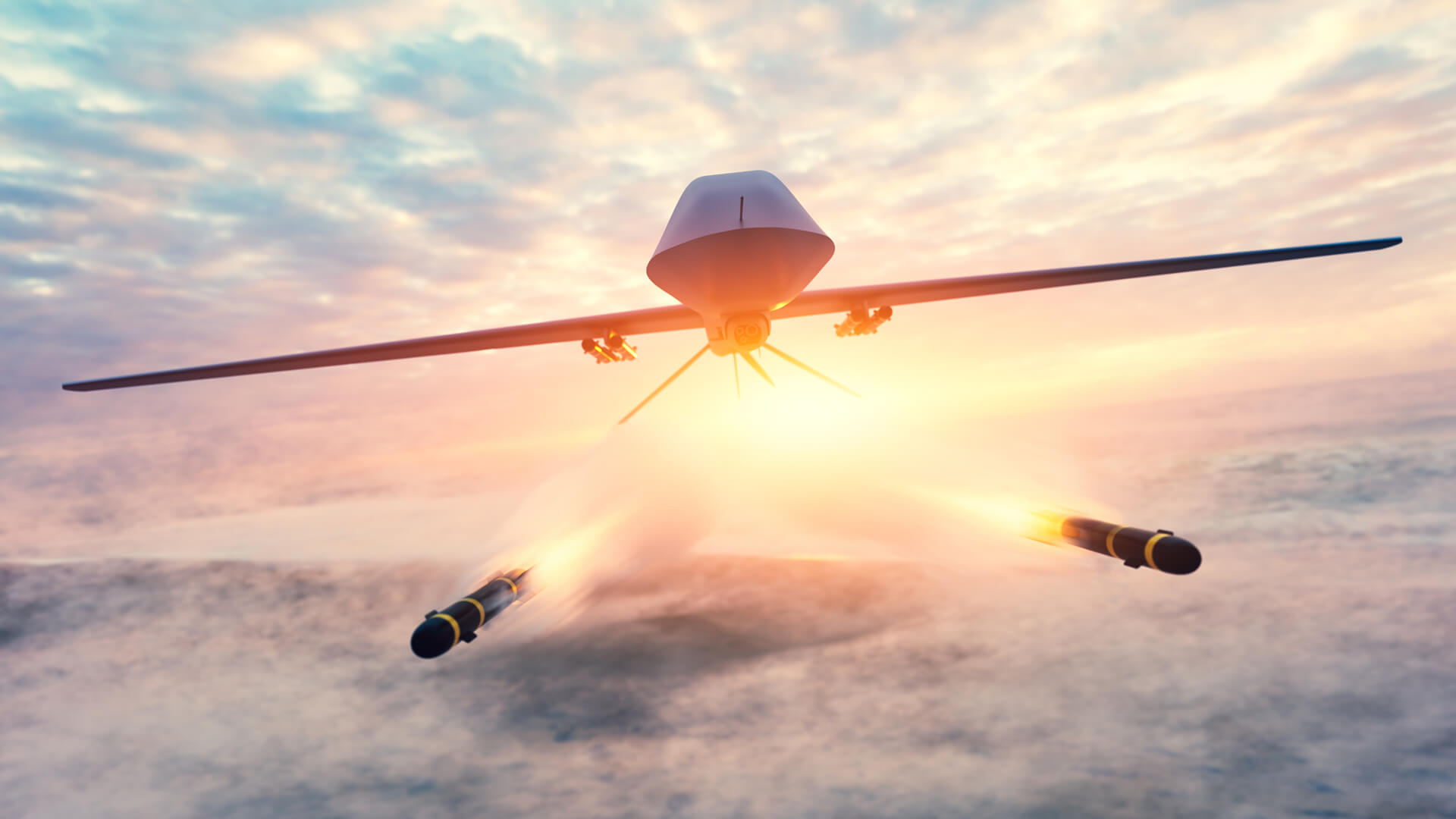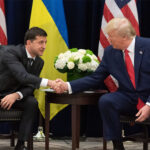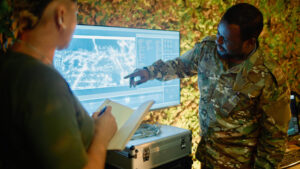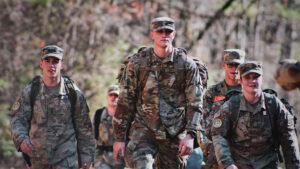Unless we figure out how to make wights from Game of Thrones or find the Dead Men of Hunharrow from The Lord of the Rings, we’re going to have to figure out how to fight wars without (living) people.
As populations shrink and demographic structures grow top-heavy, military strategies will have to shift. We’re seeing drone tech control the battlefields in the Ukraine War, but defensive tools are limited to jamming or hoping someone makes a lucky shot on the damn things.
This has created huge swaths of uninhabitable marches; areas too dangerous to live in, but too contested to control. As drone tech proliferates and new wars breakout, these marches will likely become the new standard. Wars will be less about holding ground and more about denying function. That is, until the tech evolves again.
Transcript
Hey all, Peter Zeihan here. Coming to you from an aspen glade in Colorado where it’s definitely hiking season. So I’m out and about. Today we are taking a question from the Patreon crowd that’s also going to apply to our drone series, A Future of Warfare series. The question is, in an age of terminal demographics, how does that shape military strategies and tactics?
That goes perfect with the military? Revolution? We’re experienced with drone technology as new technologies, information transfer, energy transfer and digitization and material science combined to enter a completely new world of warfare. But before we talk about where we’re going, let’s talk about where we’ve been, because it’s really instructive. So if you dial back the clock like, really dial back the clock to the late dark ages, early Middle Ages, when the Mongols were starting to boil out of the eastern Eurasian steppe and sweep across the world, the new technology of the day massed cavalry charges and cavalry, information transport and cavalry driven trade, gave the Mongols a degree of speed, lethality that no one had experience in the human condition to that point. And over the course of a few decades, they just absolutely rampaged across, China and eastern Russia and eventually knocked off the Russian government in Moscow itself, as well as all of the areas in the step to the south. The issue was pretty simple. A bunch of dudes on horse, if they know what they’re doing, can go fast and free over the plains, come in, raid, kill a bunch of people and take what they want, and then gallop away and be over the horizon before any sort of interpretive infantry or archer force can ever do anything.
So they do this over and over again, through over government, after government, after government, and eventually discovered that they could pack a little water with them and actually cross short periods of desert and attack from directions that no one had seen before. And there just weren’t any good defensive technologies to counter them. Well, eventually, after they killed enough people and destroyed enough governments, including what was the Russian government of the day, people started to develop counters, by hook or by crook?
By accident. The first one was developed by the Russians, and that was basically just going to hide in the forest, because if you’re in a forest, it’s really hard to get a good straight line for a cavalry charge. The people would have to dismount. And since there were never more than a few tens of thousands of Mongols in the entire space of the former Mongol Empire, any time they did dismount to pursue people into the woods, they were always wildly outnumbered and wildly hated.
And they didn’t last. So we got this zone where the Russians had retreated. Some of the Russians, the true Russians, if you want to use that term, had retreated north of Moscow into the Tay guy, where they were basically living off of lichen for three generations, and the Mongols, who controlled the open flats by the time the Mongols got to Europe proper, a different strategy, had been developed. And that was to be perfectly blunt. Fortifications. Doesn’t matter how fast your horses, doesn’t matter how good you are with a boar or a lance, if someone is behind a stone wall, you’re kind of out of luck and they’re just raining arrows down on you. So Europe entered their fortification era initially in Poland because of the Mongols or other reasons to have fortifications.
But in this sort of system, you basically developed feudalism where everyone would run into the fortification when the Mongols or some dudes on horseback or bandits would show up, you’d wait them out, and then you’d go out, back out to your house and tend to the fields. And so everyone tried to store about a year of grain within the fortification so they could wait out a siege.
That was the technology, the offensive versus defensive development of the day enter a world of demographic decline. And we are literally running out of people aged 50 and under who can say, pick up a rifle or a base plate in a mortar and march out into the field and do things. One of the problems when it comes to military technology is what happens the next day after the battle.
And if you have a long, grinding conflict like most conflicts are, you have to be able to hold the ground and protect the civilian infrastructure that is necessary for the civilian population to exist. Otherwise, there’s no point in having a military in the first place. So back in the day, people would live in the forests. Not a great option, but the Russians have lower standards.
Or you would run into the fortifications. In today’s world, the new horses of the plains are drones which can, on a tether, go ten kilometers out from launch point or without a tether can go maybe a thousand, even 1500. Those numbers will only go up. And if you have an opposing force that is in range of you, that has a lot of drones, they can basically make your terrain completely unlivable.
So we’re probably going to see a resurrection of an old term that dates back to Roman terms, the march, areas that are on the edge of your terrain that you cannot reliably protect. But the opposing force coming in cannot reliably occupy. They’ll become a no man’s zone.
We already have extensive territories like this in eastern and northeastern Ukraine, where the Russians have basically made it impossible for people to live or farm or maintain basic civic services.
And the Ukrainians lack the manpower that’s necessary to reoccupy these lands to provide a buffer for the civilians. And so we’re getting an ever widening band that is becoming unlivable. Some version of that is in our future, unless and until we develop a better defensive technologies. Now, at the moment, if you want to take down a drone, your only option is a really good rifle shot, good luck or jamming, which generally only has a range of a few hundred meters if that.
So we are very early into this transition, and the combination of less manpower to establish that buffer, combined with an insufficient defensive envelope to provide passive cover for that buffer, means that more and more territory across the planet is simply going to be unlivable because of conflict. You think that’s not going to come to a town near you?
I hope you’re right. But keep in mind, we’re already seeing the echoes of the Ukraine war technology percolating throughout the European militaries across Africa. And really, the laggards here are everyone in the Western Hemisphere, where we haven’t had a meaningful war in well over a century. And honestly, we’re a little out of practice when it comes to actually protecting terrain.
All of the conflicts that the United States has been involved in since World War One have been on a different continent, and that means we have prepared for different sorts of things. We have been the functional Mongols. We have been the ones that been writing fast but not really bothering to protect very much, with the exception of nuclear cover during the Cold War, which is a very important exception.
But what it does suggest is that the state, the power of the state, is going to become significantly more potent as the ability to man an army becomes less capable. It’s going to be more about denying the other side the ability to function. Then it’s going to be about protecting your own until the technologies change again.








